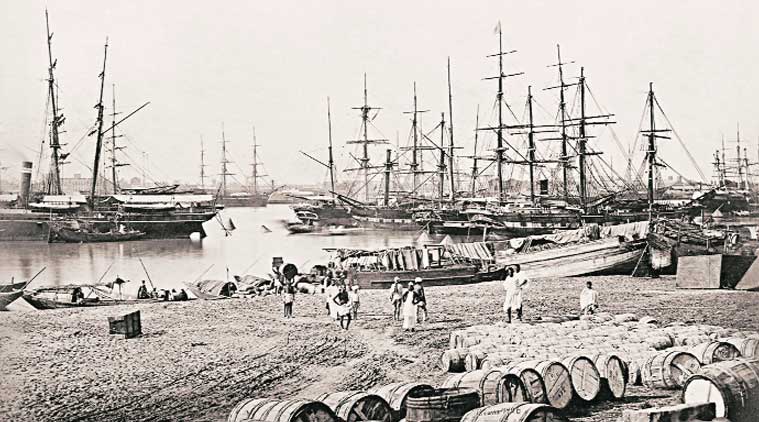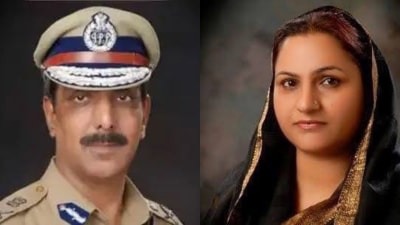With Camera as Conqueror
A collection of vintage photographs from arguably the world’s oldest studio, Bourne and Shepherd, showcases an India of the past.
 Shipping in the Hoogly in Kolkata (formerly Calcutta), taken by Samuel Bourne in the 1860 (above); Paigah Tomb in Hyderabad, taken by Samuel Bourne in the 1860 (Picture courtesy: MAP/Tasveer)
Shipping in the Hoogly in Kolkata (formerly Calcutta), taken by Samuel Bourne in the 1860 (above); Paigah Tomb in Hyderabad, taken by Samuel Bourne in the 1860 (Picture courtesy: MAP/Tasveer)
Imperial India played muse to many, in turn baring the aesthetics and architecture of its 19th and 20th century terrain to many travellers who came equipped as photographers. Following suit, Samuel Bourne, a former British clerk, arrived in Calcutta in January 1863 with a bulk of resources and a penchant for photography that lasted him seven prolific years in the country.
Bourne and Shepherd, arguably one of the earliest photography studios in the world, was established by him and Charles Shepherd in Bombay, in 1866, where it continues to exist today. Both were photographers, but Shepherd grounded himself in the studio as the “master printer”, taking charge of its operations and commissioning portraiture, while Bourne voraciously covered every landscape with his camera. Collectively they formed a legacy of the “picturesque” tradition, from which emerges “Figures in Time” — a collection of their vintage photographs — now on display at the Bhau Daji Lad Museum, Mumbai, in collaboration with Tasveer Gallery.
“Samuel Bourne was not the first photographer in India, nor the most sought-after by collectors, but he was the first to create a coherent photographic study of India’s landscape and architecture,” says Nathaniel Gaskell, curator of the show and Associate Director of Museum of Art & Photography, Bangalore, from where the images have been sourced. With a stream of subdued sepia photographs and prints, the exhibition travels from the ruins of The Residency in Lucknow and the loop of the Darjeeling-Himalayan railway, to a group of armed Affreedies positioned by the Khyber Pass in Afghanistan. Each image reveals the nature of the Indian subcontinent before its sundry and unscathed landscapes were altered and polluted by modernity and globalisation.
While the exhibition showcases 30 original photographs, it is the 20-odd prints — each reproduced by Tasveer after enlarging and digitally enhancing the originals — which emerge as windows into the past. Shot on large plate cameras, the originals hold the capacity to be blown up without compromising their quality. “Something magical happens when you zoom in on someone crossing a street in Mumbai around 150 years ago. Your mind wonders who they were and what their lives were like. An example would be the image of the Esplanade Road taken around 1880. In the original you just see various dots on the street, but when they’re enlarged, they become real people and looking at them feels like a process of discovery and is an insight into a private moment,” shares Gaskell.
The clarity and precision of the prints not only allow the audience to absorb the pictorial compositions of the photographs in their entirety, but also speak of the technical expertise of their photographers. As photographic historian and writer Hugh Rayner writes in his essay for the catalogue accompanying the exhibition: “It was necessary to be able to erect a fully equipped darkroom tent within a very short distance of the spot chosen to fix the camera. Other difficulties were often caused by the weather,” says Rayner. He also mentions Bourne’s painstaking practice in the remote Himalayas, where he would produce “a perfect result” even out of a small tent pitched on the mountainside, amid dust and a hundred degrees.
Vintage and valuable as they may be today, these are the same photographs that were commonly reproduced as postcards and sold to the British as souvenirs of India in the 19th century. While the photographs represent how India has changed over time, they also stand for how photography has moved forward, respected beyond a mere tool for documentation.





- 01
- 02
- 03
- 04
- 05






















